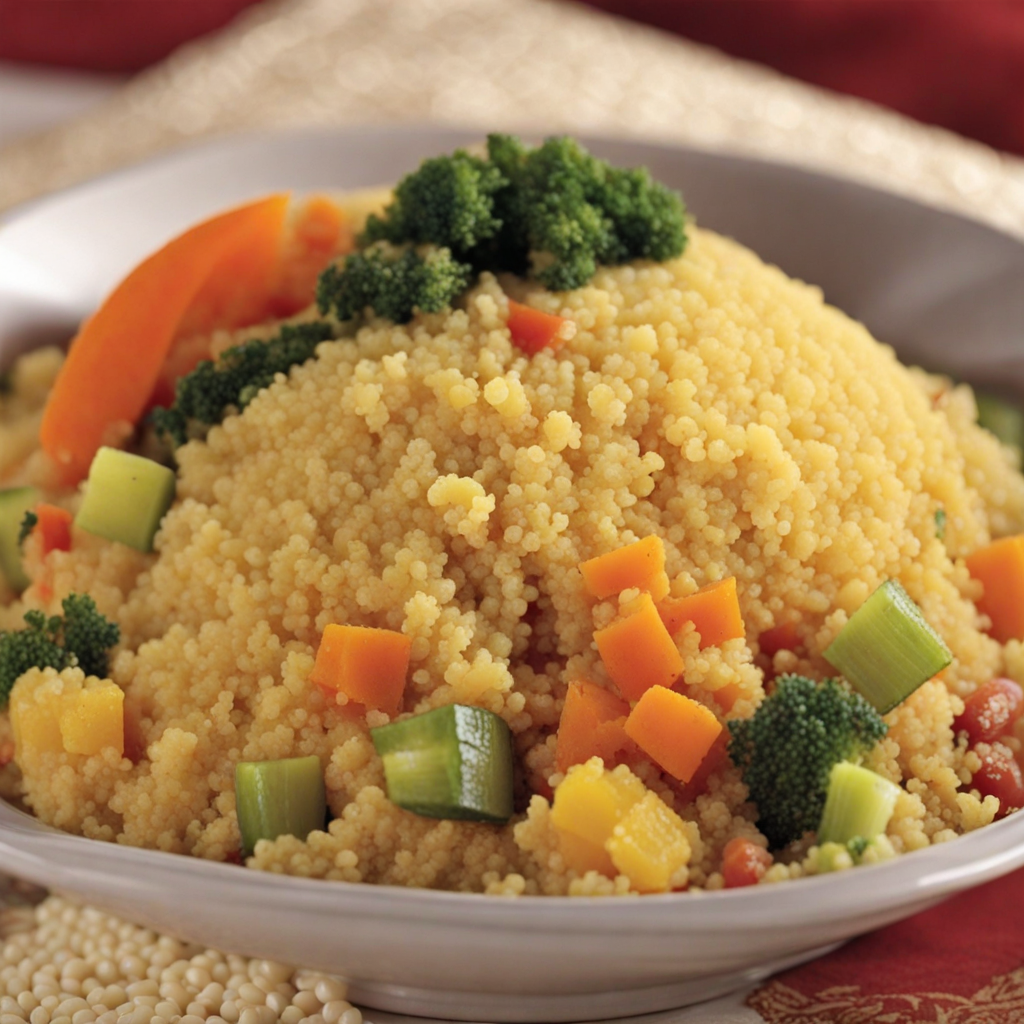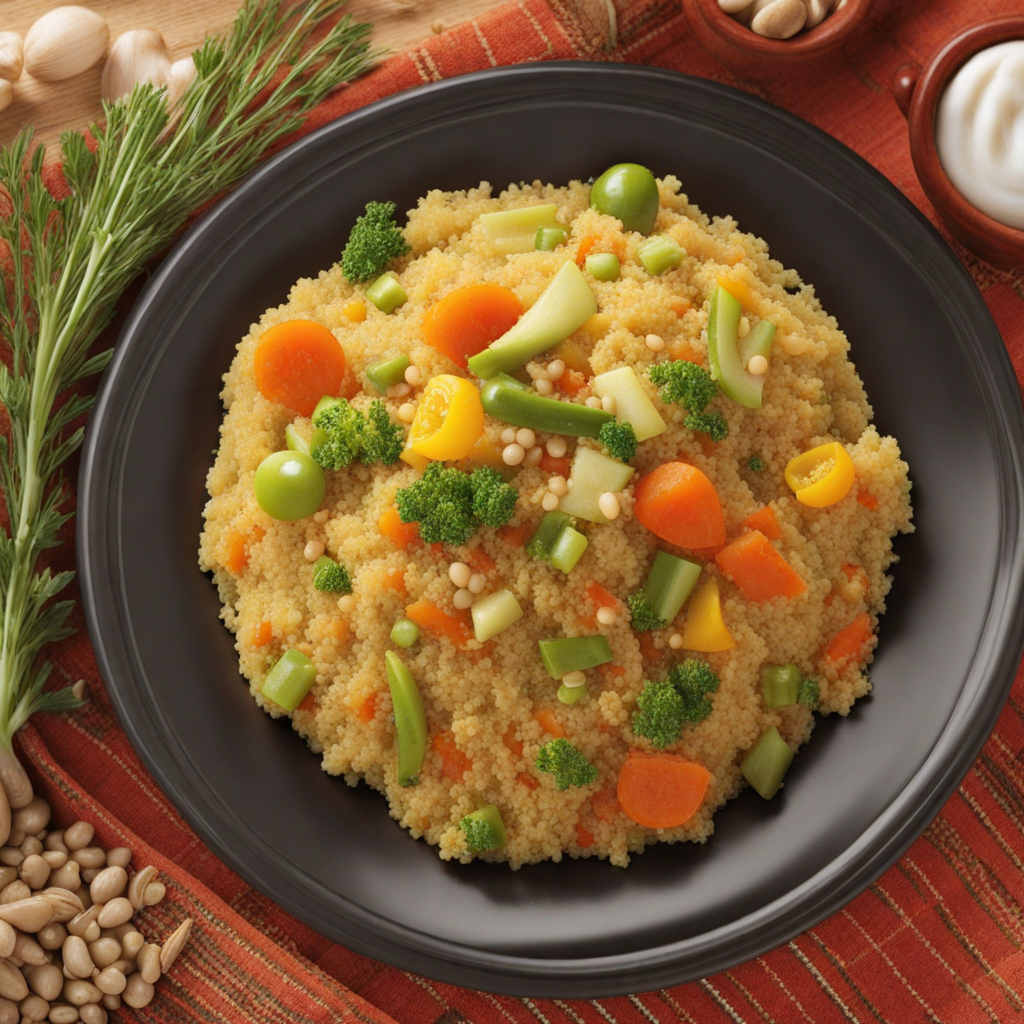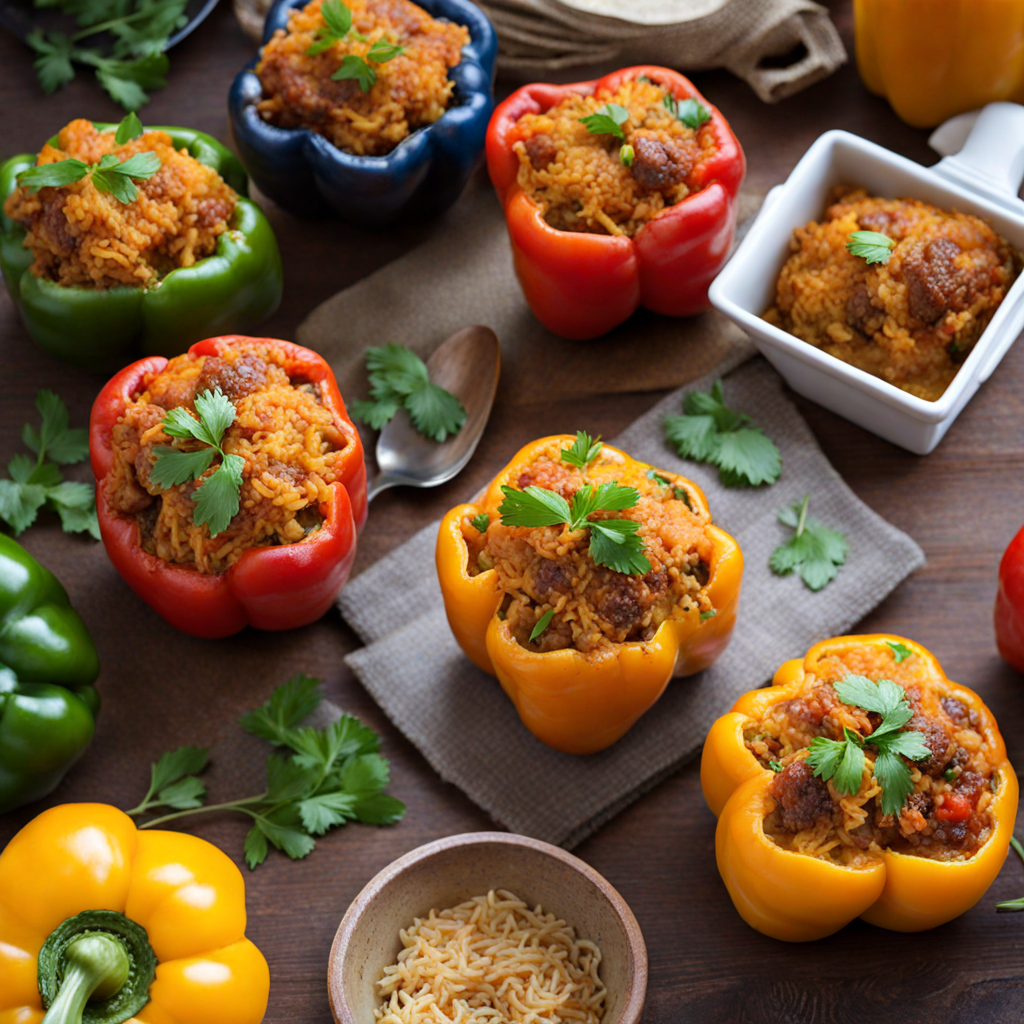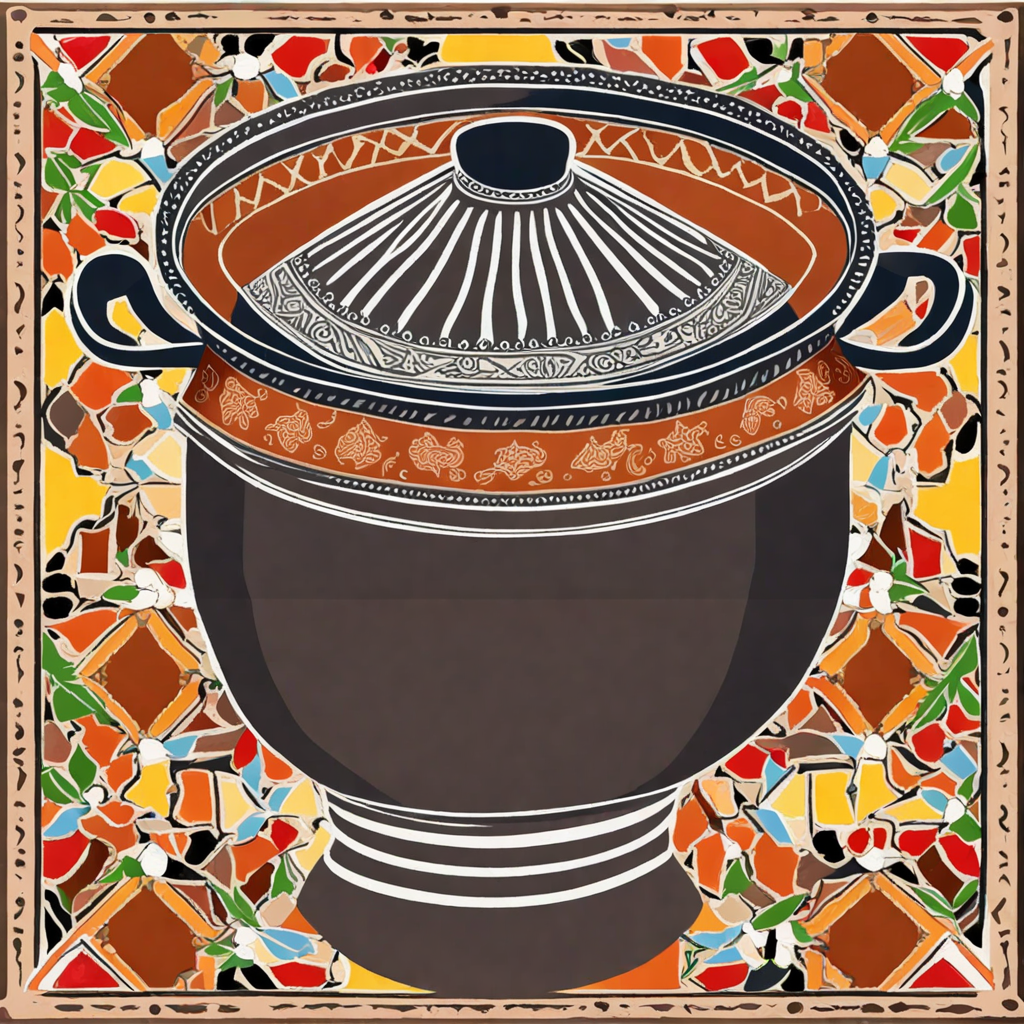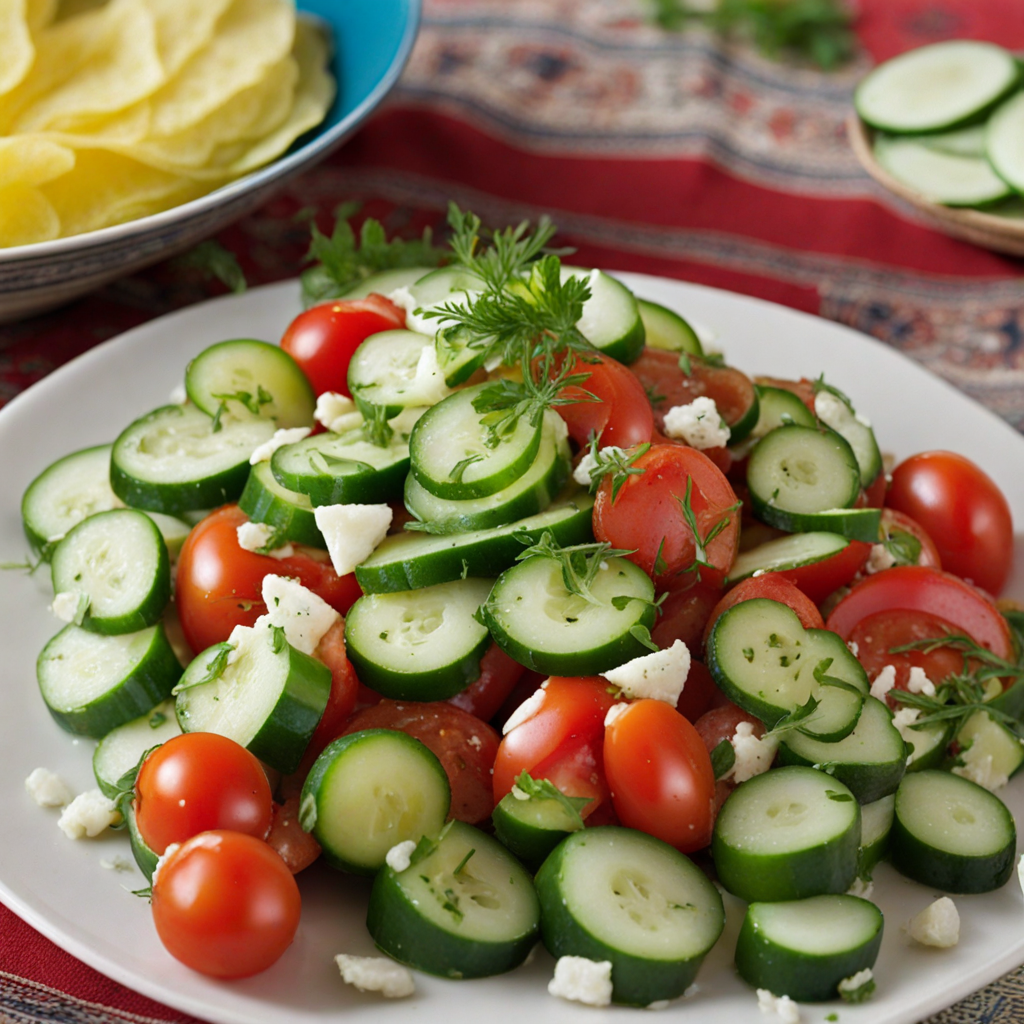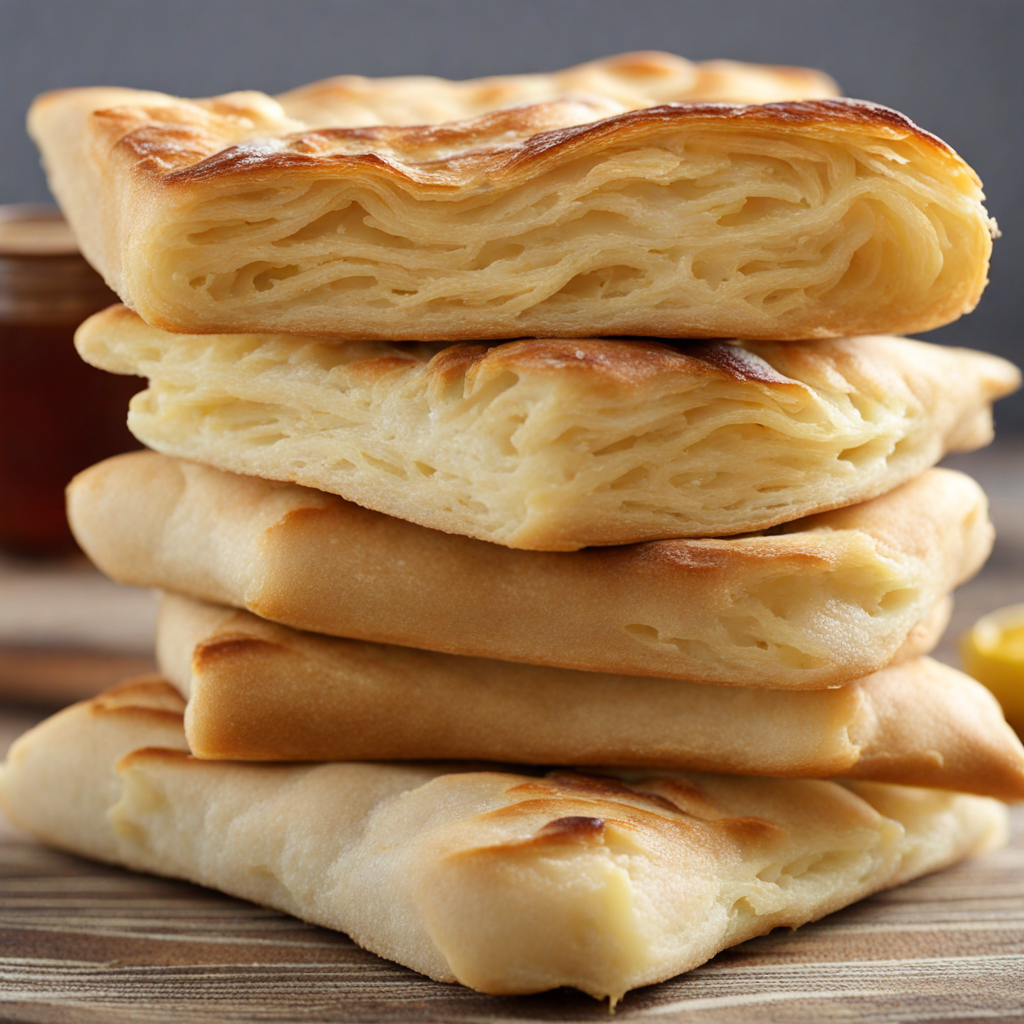Vegetable Couscous
Vegetable Couscous is a vibrant and aromatic dish that embodies the essence of Moroccan cuisine. At its heart, couscous—tiny granules of semolina wheat—is steamed to fluffy perfection, creating a light and airy base for a plethora of colorful vegetables. Traditionally, this dish features an assortment of seasonal vegetables such as carrots, zucchini, bell peppers, and chickpeas, all of which are seasoned with a medley of spices including cumin, coriander, and saffron. The spices not only enhance the flavor but also infuse the couscous with a rich golden hue, making it visually appealing. The preparation of Vegetable Couscous is a culinary art in itself, typically involving a multi-tiered steamer known as a couscoussier. The vegetables are cooked separately until tender and then gently mixed with the fluffy couscous, allowing each bite to capture the essence of the spices and the natural sweetness of the vegetables. Often served with a drizzle of olive oil and a sprinkle of fresh herbs like parsley and cilantro, this dish is both nutritious and satisfying, perfect for those seeking a hearty yet healthful meal. Vegetable Couscous is not only a staple in Moroccan households but also a symbol of hospitality and communal dining. It is often enjoyed during family gatherings and celebrations, where it is shared among friends and loved ones. The dish can be easily customized to include a variety of vegetables based on personal preferences or seasonal availability, making it a versatile option for any palate. With its delightful combination of textures, vibrant flavors, and wholesome ingredients, Vegetable Couscous invites food lovers to explore the rich culinary traditions of Morocco.
How It Became This Dish
The Rich History of كسكس بالخضار (Couscous with Vegetables) from Morocco #### Origins: A Culinary Gem of North Africa Couscous is a cornerstone of Moroccan cuisine, and its dish, كسكس بالخضار (couscous with vegetables), is not just a meal but a cultural emblem that encapsulates the history, agricultural practices, and social fabric of Morocco. The origins of couscous date back to the Berber tribes of North Africa, with evidence suggesting that it has been consumed for over a millennium. The earliest written references to couscous can be traced to the 13th century in the Maghreb region, where it was a staple among Berber communities. Traditionally made from durum wheat semolina, couscous is processed through a meticulous steaming method, which was likely developed by the Berbers as a practical way to prepare a nutritious grain that could be stored for long periods. The art of making couscous is a communal activity, often involving women who would gather to share the labor and the joy of creating this staple food. The grains are steamed over a simmering pot of broth, absorbing the flavors of the accompanying ingredients, which often include vegetables, meats, and spices. #### Cultural Significance: A Symbol of Unity and Tradition Couscous has transcended its status as mere food to become a symbol of Moroccan hospitality, celebration, and family unity. In Moroccan culture, it is traditionally served on Fridays, the holy day of the week, and is often the centerpiece of family gatherings and festive occasions. The preparation and serving of كسكس بالخضار is steeped in ritual; it is typically presented on a large communal platter, encouraging diners to share and partake in the meal together, thus reinforcing social bonds. The dish is also significant during special celebrations, such as weddings and religious holidays like Eid al-Adha. It is customary for families to prepare large quantities to accommodate extended family and guests, reflecting the Moroccan values of generosity and community. The variety of vegetables used in the dish—carrots, zucchini, chickpeas, and sometimes pumpkin—symbolizes the bounty of the land and the importance of agriculture in Moroccan society. #### Development Over Time: An Evolving Culinary Tradition As the centuries progressed, so did the preparation and presentation of كسكس بالخضار. The dish adapted to regional variations and the influences of various cultures that have intersected with Morocco throughout its history, including Arab, Andalusian, and even French influences during the colonial period. The incorporation of spices such as cumin, coriander, and saffron reflects the rich trading history of Morocco, which has long been a hub for spice routes. In rural areas, couscous is typically prepared with whatever vegetables are in season, emphasizing a farm-to-table philosophy that remains integral to Moroccan cooking. In contrast, urban centers have embraced more complex variations, often including a wider range of meats, such as lamb or chicken, and additional ingredients like raisins or nuts for added texture and flavor. The advent of tourism in the late 20th century also played a pivotal role in the evolution of كسكس بالخضار. As more foreigners became enchanted by Moroccan cuisine, chefs began to experiment with traditional recipes, presenting couscous in innovative ways to cater to diverse palates. This led to the emergence of gourmet interpretations of the dish, while still respecting its traditional roots. Today, one might find couscous with vegetables served alongside fusion elements, such as a drizzle of tahini or a sprinkle of harissa, a spicy chili paste. #### Modern Day: A Global Favorite In contemporary times, كسكس بالخضار has garnered international acclaim, becoming a staple in Moroccan restaurants worldwide. It is celebrated not only for its unique flavors but also for its health benefits, being rich in fiber and nutrients when combined with a variety of vegetables. The global rise of vegetarian and plant-based diets has also contributed to its popularity, as couscous can easily be tailored to meet dietary preferences. Moreover, the dish has been embraced by culinary enthusiasts and home cooks alike. Recipes for كسكس بالخضار can be found in numerous cookbooks and online platforms, showcasing its versatility and adaptability. Cooking classes focused on Moroccan cuisine often include couscous-making as a highlight, reflecting a growing interest in traditional cooking techniques and the cultural stories behind them. #### Conclusion: A Culinary Heritage Worth Celebrating The history of كسكس بالخضار is a rich tapestry woven from the threads of agriculture, tradition, and social connection. It stands as a testament to Morocco's vibrant culinary heritage and its ability to adapt and thrive over the centuries. As more people around the world discover the joys of Moroccan cuisine, the importance of this dish continues to grow, fostering a deeper appreciation for the culture and history that it represents. In essence, كسكس بالخضار is more than just a meal; it is a celebration of life, a unifying force for communities, and a delicious gateway into the heart of Moroccan hospitality. Whether enjoyed at a family gathering in Morocco or a trendy restaurant halfway across the globe, this dish invites all to partake in its rich history and the warmth of shared moments.
You may like
Discover local flavors from Morocco


